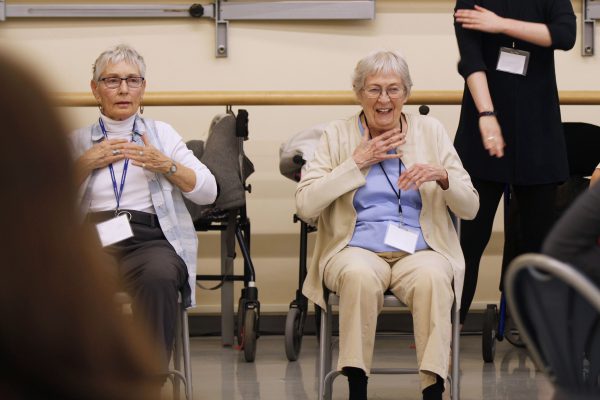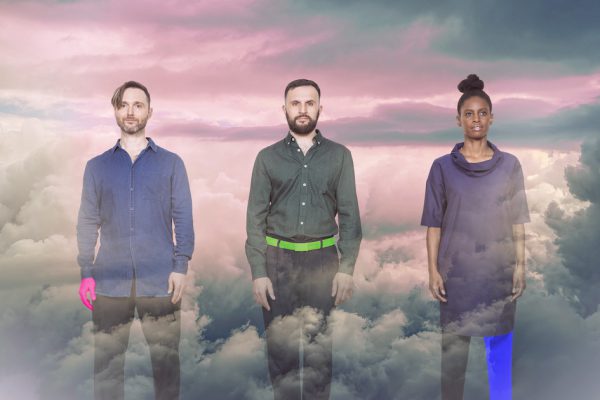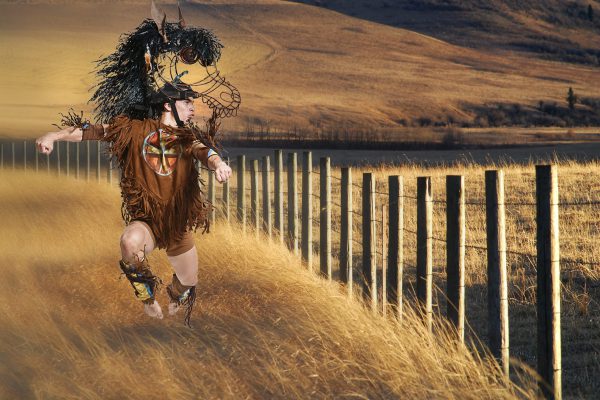The Sunday before I went to see Dreamwalker Dance Company’s Dual Light, I sat in a room with forty-four other dancemakers and talked about the state of the choreographer in Toronto today. One urgent item among many that arose from that meeting was the call for more dance artists to write about dance — to engage in critical dialogue about the work we are making. I am in deep agreement with this stance; it is one reason I write for this publication. It is also something I struggle with because, in Toronto, we have not made a habit of being honest with each other. Whether it is a mark of competitiveness, a lack of understanding about practices that differ from our own or simply not wishing to “hurt feelings,” it is clear that overwhelmingly as a community, we have a deep aversion to giving and receiving critical feedback. And we have not fostered the tools that make this possible — the critical eye that expands beyond like and dislike to actively engage with a work and its maker.
I show up to the opening night of Dual Light with this recent conversation very present in my mind. I have heard from career critics that one should arrive at a performance an empty slate, without preconceived notions or bias. I believe this to be only partly possible and on a constantly fluctuating scale. I arrive and I see friends and colleagues all around me. I know that Andrea Nann, Dreamwalker’s artistic director and choreographer/performer within the work, has lost a close friend just a few days prior. I quickly observe that Nann’s father, Richard Nann, a featured presence inside of the work, is in the audience. I am pretty tight with the sound designer. I have danced with the artists onstage, one in particular for over ten years. I bring all of this knowledge, history and reality with me. And on this particular night, I bring the call to arms from the Sunday prior — the call to criticality, to honesty, to dialogue.
In Toronto’s contemporary dance scene, reviews are rarely used to generate ticket sales. As I write this, Dual Light has already finished its four-performance run and — given the lack of opportunities for repeat engagements or touring of dance works for Toronto artists — may never be seen again. So what can I offer to the reader in writing this review? What can I offer to the artist? I continue to believe that the job of a critic is not to give a thumbs-up or thumbs-down, not to give a description of the choreographer’s intent or a recollection of events, but to offer something more valuable: our experience of the work.
My experience of Dual Light is that I take pleasure in individual moments. Nann’s opening oratory is direct and affecting and serves to recast the stage as an “outer space” — a place between celestial bodies and also human ones. An understated but assured solo by Brendan Wyatt sets a tone of both discovery and what is already understood. I’m struck by the virtuosity of Yuichiro Inoue as his body arcs and bounds through a solo of his own, as well as a focused Kristy Kennedy as she tells the long tale of a travelling hand, her own just barely marking that which she describes. The energy and precision brings the four dancers to each of their own pathways, as they form individual dances around a common source of light. The brightly lit mind of Nann’s father has been recorded and made personal through the context she gives us off the top — that he is aging, that he needs more care, that she has recently moved him into her home. I am grateful for this link to her reality and I register how the emotion of it comes not from her delivery but from what we collectively know of aging parents. I feel it in my chest, just as Nann habitually presses on her own sternum as she speaks.
The environment of the work resonates with a cosmic kind of minimalism. There is the combination of Cheryl Lalonde’s reflective surfaces and Simon Rossiter’s beams of light, an ever-present duet that finds a high point in the moment Lalonde’s large suspended satellite turns a burnt orange with glare as it hovers over Inoue and Wyatt, who are at rest on the floor. In Joshua Van Tassel’s accompanying soundscape, you can almost hear the low growl of tectonic plates shifting and I begin to see the stage as Nann’s potent outer space. All this ends too soon and we move on to the next scene, a light and casual encounter that makes the previous intensity of sound and stage feel overly dramatic. In this way, the set and sound both support and undermine the big picture.
The score is performed mostly live, with Van Tassel a quiet performative presence in one upstage corner, proposing a landscape that both drives and provides a subtle highlight to the work. Van Tassel’s atmospheric compositions are coupled with live and recorded versions of personal stories and allegories, modalities of translation and description, pop songs sung in varying languages and theoretical encounters between Nann and her father. It is an oft-changing score and situation that builds on the language of the bodies present before us and offers us multiple lenses through which to view the here, there and spaces between. In many instances, it is compelling and wonderfully human. But altogether, it doesn’t add up. The elements overwhelm and obscure each other, and instead of deftly exploring the space between, there is a sensation closer to drifting
There are certain moments when I feel deep trust in the production, when the performers astonish me with their surety and conviction, when I feel free to hook in and follow along. Alternately, there are moments when I feel anxious and not entirely confident in what’s happening — improvised partnering sections that feel clumsy, like the artists might collide and set moves where (despite the best efforts of scenic performer James Kendal) the sensitive satellite is not moving in the seamless way I want it to and it’s stressing me out. There are many instants that reach out and sparkle like stars on the clearest night, but I cannot find a similar clarity in the larger constellation of the work — it remains foggy with an overabundance of offerings.
It is worth noting that in Carol’s Dance Notes, a curated accompaniment written by dance writer and educator Carol Anderson and found in the Dual Light program, Anderson describes the work as “less a destination journey than a fluid suspension.” When I read this after the fact, I can begin to imagine the work as such. But I also know that is not what I experienced.
Of course, my experience and this review is not the bottom line. It is a subjective response to a living artwork, an offering both to audience and to the creative team, an opportunity for conversation and growth, which is something I take for granted artists are aiming for with their work. I stress this for all of us who shy away from trusting artists with the unique information of experience. I stress this for anyone who sees my work and wants to talk about it. I look forward to continuing the conversation.
Tagged: Contemporary, Kristy Kennedy, Yuichiro Inoue, ON , Toronto





